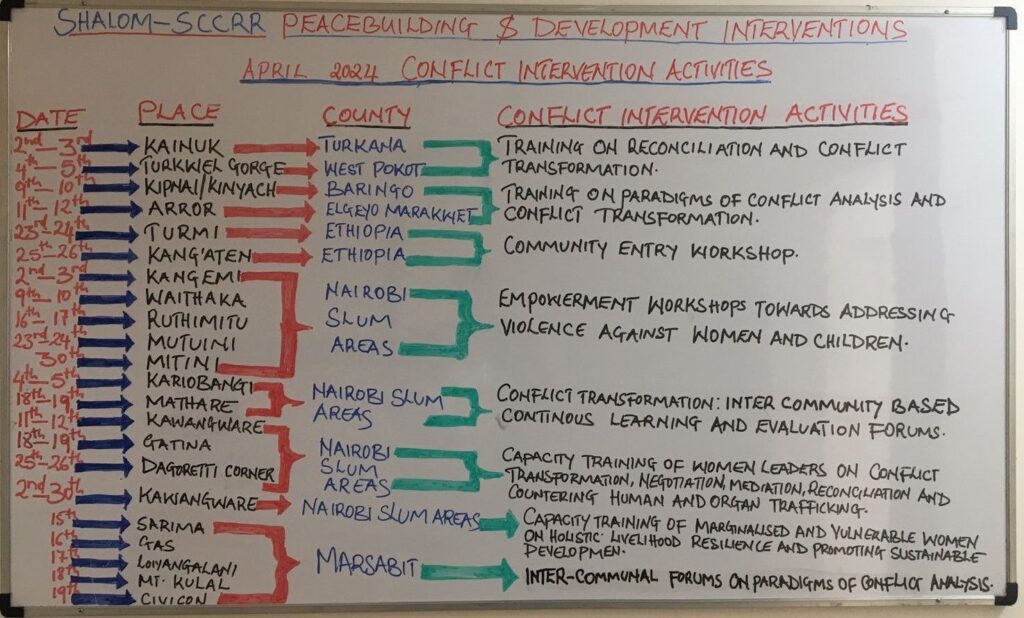By Mary Koech

Participants of the problem solving workshop at the conclusion of the process.
Shalom Center for Conflict Resolution and Reconciliation applies a unique approach towards transforming manifest conflict from negative peace (conflict settlement) to positive peace (conflict resolution). One of the approaches used is the interethnic Problem Solving Workshops. As part of the process of peace-building, SCCRR conducts Problem Solving Workshops aimed at having joint interethnic activities.
Inserting itself into conflict zones, Shalom has conducted a series of conflict analysis and peacebuilding trainings with the Turkana and Pokot communities aimed at empowerment in dispute resolution over a period of 3 years. The trainings also prepare communities to build interethnic relationships once fractured as a result of conflict. The skills acquired allow the community members to gradually transform behaviour and attitudes at the personal and relational level thereby paving the way towards positive peace.

Chief Africano expresses his gratitude to SCCRR for the process of problem solving.
In September 2015, SCCRR held the first Problem Solving workshop between the two ethnic groups in Eldoret, Uasin Gishu County. Shalom carefully selected community leaders representing the youth morans (warriors), local administration, clan elders, District Peace Committee members, religious leaders and women leaders to represent their communities. Since then the participants from both ethnic groups were able to identify causes of conflict, brain storm on possible solutions, identify the issues that they can address, implement and evaluate. The participants identified the lack of capacity building and education in their communities on peace-related issues as an area to tackle. In addition to this, they also saw the need to address conflict memory. This, they suggested, would require an open and controlled platform where victims can share their experiences and slowly heal their wounds.

Shalom recently visited a Pokot village accompanied by a member of the Turkana community to experience first-hand the work to create peace by SCCRR empowered Peace Groups in the area.
Chief Africano expressed his gratitude to Shalom for bringing the two groups together. “We have had an opportunity to not only listen to each other and work together towards our common problems but we have also built life-long relationships that never existed before,” the chief reported. The five phase process of process solving came to a conclusion in February, 2017. By focusing on the right issues and evaluate their intervention, the Shalom Problem Solving team were able to realize the importance of concentrating on particular villages. They identified most affected Kraals (Villages) along the conflict corridor of Turkana and Pokot and concentrated their interventions there. With the identification of these Kraals, Shalom together with the problem solving team with engage community members on further peacebuilding skills and techniques as well as interethnic peacebuilding activities.
The nexus between Peacebuilding activities and development is crucial in the realisation of positive peace. When different ethnic communities are equipped with analytical skills in peacebuilding and can come together and empower themselves economically, then positive peace is realized.

